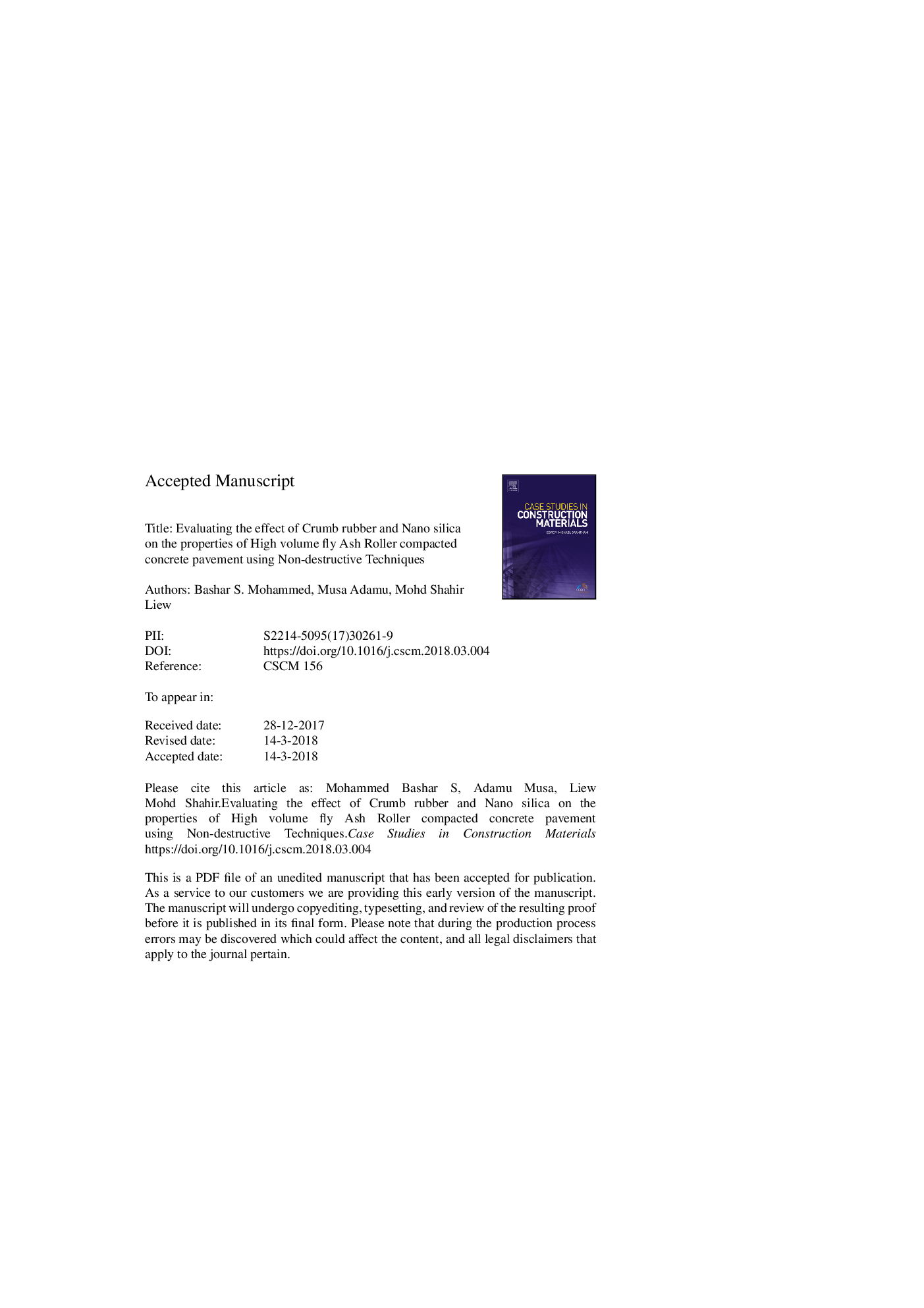| Article ID | Journal | Published Year | Pages | File Type |
|---|---|---|---|---|
| 6701907 | Case Studies in Construction Materials | 2018 | 26 Pages |
Abstract
The major problems related to roller compacted concrete (RCC) pavement are high rigidity, lower tensile strength which causes a tendency of cracking due to thermal or plastic shrinkage, flexural and fatigue loads. Furthermore, RCC pavement does not support the use of dowel bars or reinforcement due to the way it is placed and compacted, these also aided in cracking and consequently increased maintenance cost. To address these issues, high volume fly ash (HVFA) RCC pavement was developed by partially replacing 50% cement by volume with fly ash. Crumb rubber was used as a partial replacement to fine aggregate in HVFA RCC pavement at 0%, 10%, 20%, and 30% replacement by volume. Nano silica was added at 0%, 1%, 2% and 3% by weight of cementitious materials to improve early strength development in HVFA RCC pavement and mitigate the loss of strength due to the incorporation of crumb rubber. The nondestructive technique using the rebound hammer test (RHT) and ultrasonic pulse velocity (UPV) were used to evaluate the effect of crumb rubber and nano silica on the performance of HVFA RCC pavement. The results showed that the use of HVFA as cement replacement decreases both the unit weight, compressive strength, rebound number (RN). Furthermore, the unit weight, compressive strength, RN, UPV and dynamic modulus of elasticity of HVFA RCC pavement all decreases with increase in crumb rubber content and increases with the addition of nano-silica. Combined UPV-RN (SonReb) models for predicting the 28â¯days strength of HVFA RCC pavement based on combining UPV and RN were developed using multivariable regression (double power, bilinear, and double exponential models). The exponential combined SonReb model is the most suitable for predicting the compressive strength of HVFA RCC pavement using UPV and RN as the independent variable with better predicting ability, higher correlation compared to the single variable models.
Keywords
Related Topics
Physical Sciences and Engineering
Engineering
Civil and Structural Engineering
Authors
Bashar S. Mohammed, Musa Adamu, Mohd Shahir Liew,
